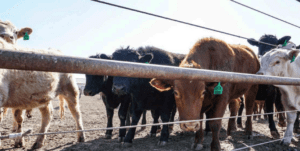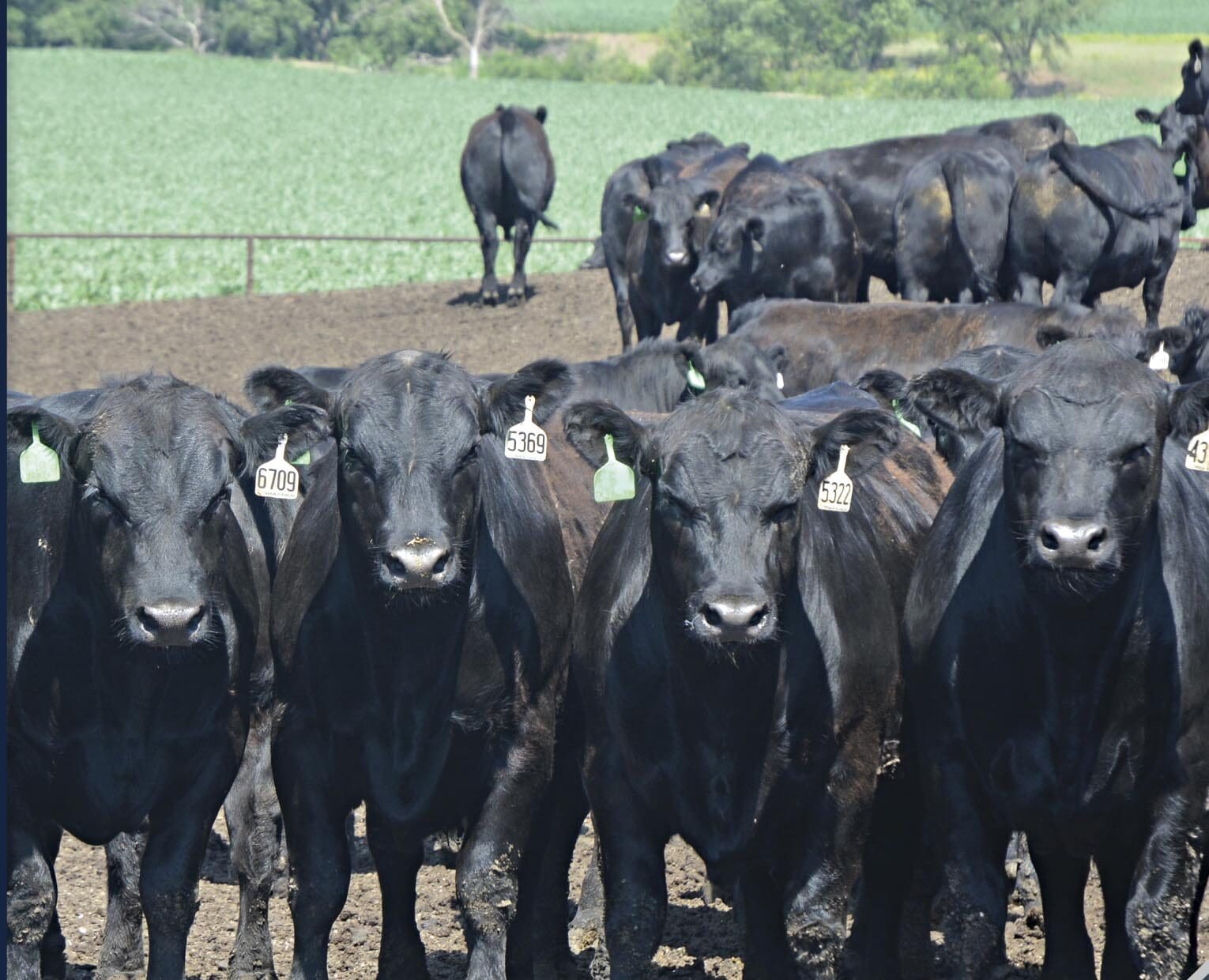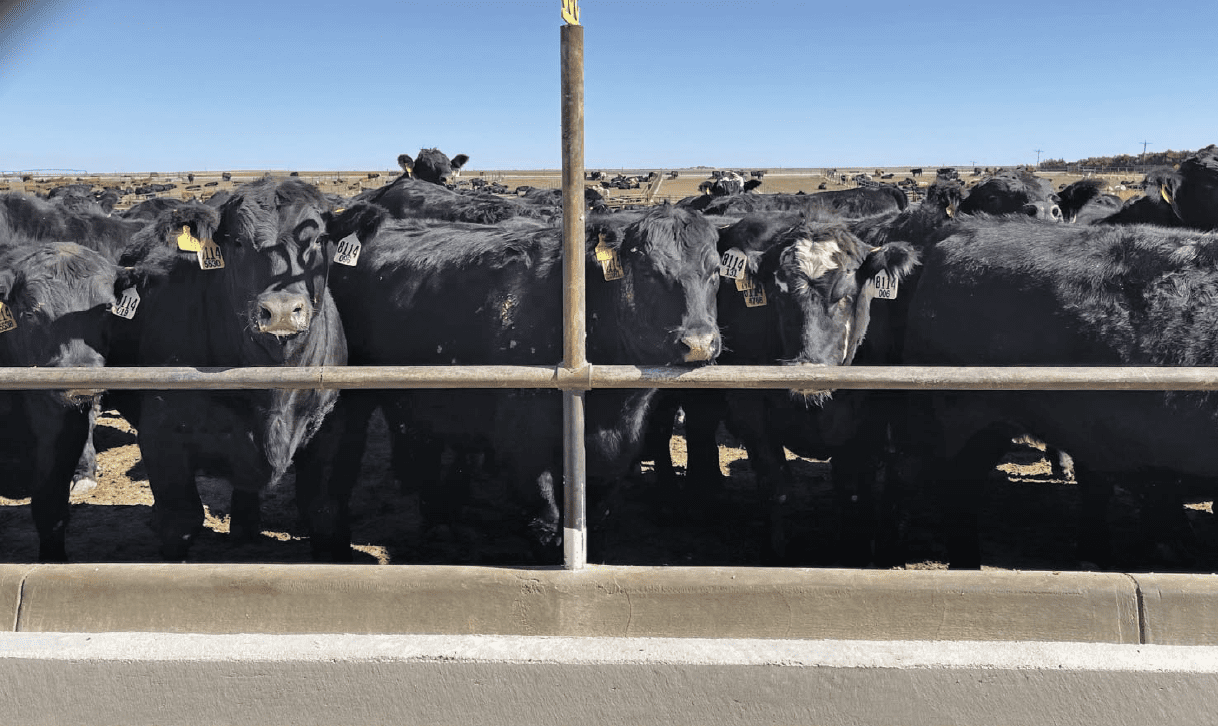

Atypical interstitial pneumonia, commonly known as AIP, continues to be a considerable problem in the beef industry. AIP is poorly understood, but we can compare this syndrome to disorders in other species that result in similar lung pathology, including COVID in humans.
True AIP in cattle is also known as fog fever. In these cases, cattle consume toxic feedstuffs such as lush forages, perilla mint, or moldy sweet potatoes.
In days gone by, cattle turned out on lush forages on river bottoms on foggy mornings would consume the feedstuffs high in the amino acid named tryptophan.
The tryptophan was converted in the rumen to 3-methylindole, which is absorbed across the rumen wall and goes to the lung in the bloodstream. In the lungs, 3-methylindole is converted to 3-MEIN.
This compound is toxic to cells that line the air sacs (interstitial cells). The toxin causes an inflammatory reaction, and the result is pathology associated with AIP.

People that died of respiratory disease with COVID had pathology consistent with acute respiratory distress syndrome (ARDS).
Microscopically and grossly, ARDS and AIP present the same. As you review the literature, there are 60 known causes of ARDS in humans.
The most common causes of ARDS in humans are septicemia (blood bacterial infection), inhalation of smoke, aspiration of water or vomit, inhalation of endotoxin, and trauma to the chest area.
Cattle on feed would have a consistent tryptophan intake. Therefore, it is logical that cattle suffer from ARDS in the feedlot rather than traditional AIP like fog fever cows.
The combination of heat stress, dust inhalation (endotoxins in manure), sepsis, and other factors could be additive, resulting in clinical disease.
The cattle with AIP/ARDS will present in grave respiratory failure. Their backs will be swayed, and they will be mouth breathing.
Most of these animals will stand around a water tank. They are thirsty but can’t stop panting long enough to get a drink.
The lungs at necropsy for AIP/ARDS cattle that die are severely swollen, large, and heavy. It is no wonder that the cattle have difficulty breathing.
The increased cellular mass in the lungs decreases the space for air. Animals also have trouble exhaling due to the fact that the lungs become too big for the chest cavity and don’t want to decompress.
We tend to see the incidence of AIP more in longer day cattle during the summertime.

Many times, we feel that the clinical signs of AIP come on very quickly. We have tended to think that the syndrome is similar to an allergic reaction with cause and effect being tied together in a few hours.
Veterinarians have also reported that cattle that died from AIP present with higher rumen pH upon necropsy.
These veterinarians reported that cattle may suffer from a digestive upset, such as acidosis, and then go off feed prior to the acute presentation of the syndrome.
However, as we have learned with COVID, the pathology associated with ARDS may take over a week to develop.
Perhaps these cattle contract respiratory disease issues such as AIP/ARDS from dust, heat stress, endotoxin inhalation, or other insult and start to develop the pathology over a 5- to 10-day period.
These cattle would be uncomfortable and then decrease their intakes until they present acutely to a pen rider. By the time we can identify AIP cattle, the lung pathology has progressed severely and cattle are not eating.
For every complex problem, there is a simple answer. That simple answer is wrong. Or at the very least, it is not the only factor.
AIP in feedlot cattle must be a complex issue. The human medical field has been able to create AIP/ARDS-like syndrome in sheep, pigs, dogs, and other animals.
The challenge models combine heat stress with smoke inhalation, endotoxin inhalation, sepsis from bacterial infection, and lavage of internal lung surfaces.
If we think about AIP/ARDS in feedlot cattle, we see the presentation in the summer in cattle with many days on feed.
In the summer, we have heat stress and dust inhalation in our cattle. Our “dust” is not dirt. Feedlot dust is dried manure and that means we will have gram negative bacterial endotoxin in the particles being inhaled.
If there are 60 known causes of ARDS in humans, why would we think that there would be one or two clear reasons we see this syndrome in cattle?
Nearly half of the pancreatitis cases in humans lead to ARDS because the lipase from the pancreas travels into the lungs and attacks the phospholipid bilayer of the interstitial cells.
We have seen from researchers that stress (regardless of the cause) will create leaky gut syndrome in cattle allowing bacteria and endotoxin from the gut to enter the bloodstream.
Whether the insult is from inhalation or from the bloodstream, agents (viruses, bacteria, toxins) are getting to the interstitial cells of the lungs and causing severe inflammation and subsequent pathology.

So, knowing that AIP/ARDS is a non-infectious disease process, it is not a surprise that an effective treatment for AIP is not known.
We experience very high case fatality rates in true AIP/ARDS cases in feedlot cattle. In humans, ventilation and low-dose anti-inflammatory agents such as dexamethasone are used in the treatment.
We do not have ventilators or the ability to slowly drip dexamethasone for multiple days in feedlot cattle.
High doses of dexamethasone in human ARDS cases resulted in worse case outcomes than not giving steroids at all.
Case outcomes in ARDS cases in humans are not very rewarding even with advanced supportive care.
While prevention and treatment of AIP/ARDS is hard to pinpoint, it is important to note that good animal husbandry and low stress cattle handling are imperative.
We must focus on areas of stress such as heat stress, dust, nutritional stress (acidosis, bunk management), physiological stress of long days of exposure to high energy diets, cattle handling during reimplant, bunk and water tank space, previous bouts with respiratory disease, and more.
Because it is difficult to differentiate between AIP/ARDS and BRD, we usually treat with a short withdrawal antibiotic and then provide supportive care with good air movement and shade, along with fresh water and feed.
Some animals will not make the trip all the way to the hospital due to the stress and decreased lung capacity.
Using a trailer to move these animals may save their life. We will continue to learn more as we develop diagnostic tools and use technology to identify root causes without our biases leading us down the wrong path.
 Dr. Dan U. Thomson is a third-generation bovine veterinarian from Clearfield, Iowa. Thomson is an owner/partner in PAC veterinary and research services which oversees the veterinary care, health and well-being for 20% of the U.S. cattle of feed. He is recognized internationally as a leader in animal welfare, beef cattle production, and cattle health management. Dr. Thomson’s research program has been granted over $35.3 million with $16.0 million of those funds coming with him as the primary investigator. Thomson is the founder and host of Doc Talk, a nationally aired beef cattle health veterinary show on television. He has hosted over 550 episodes of the show in its 11th season that reaches over 45 million homes world-wide. Dr. Dan is married to his wife Cindy. They have four daughters: Kelly, Katelyn, Tory, and Sarah. They enjoy hunting over bird dogs, fishing in southwest Iowa, and traveling.
Dr. Dan U. Thomson is a third-generation bovine veterinarian from Clearfield, Iowa. Thomson is an owner/partner in PAC veterinary and research services which oversees the veterinary care, health and well-being for 20% of the U.S. cattle of feed. He is recognized internationally as a leader in animal welfare, beef cattle production, and cattle health management. Dr. Thomson’s research program has been granted over $35.3 million with $16.0 million of those funds coming with him as the primary investigator. Thomson is the founder and host of Doc Talk, a nationally aired beef cattle health veterinary show on television. He has hosted over 550 episodes of the show in its 11th season that reaches over 45 million homes world-wide. Dr. Dan is married to his wife Cindy. They have four daughters: Kelly, Katelyn, Tory, and Sarah. They enjoy hunting over bird dogs, fishing in southwest Iowa, and traveling.
Get all Doc Talk episodes straight to your email inbox!